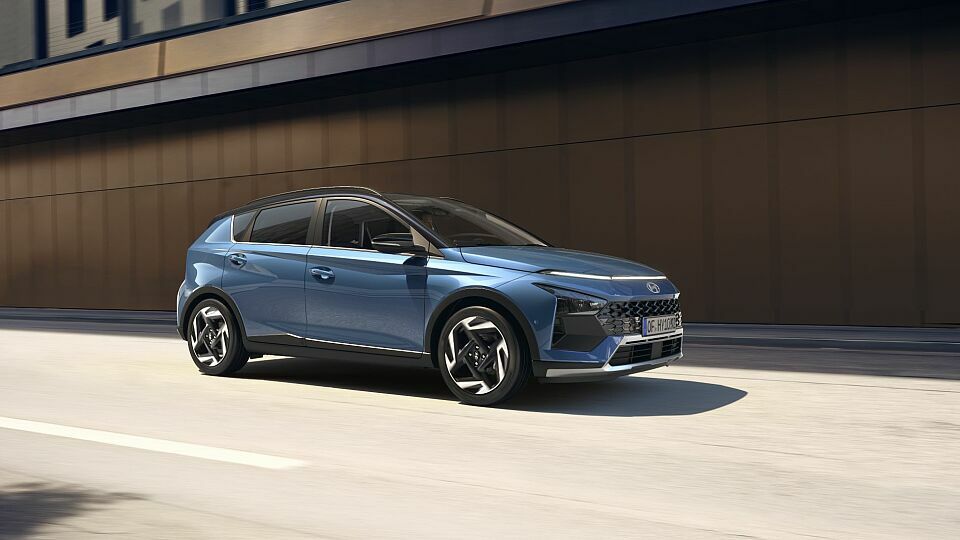Maximilian Stocker

Hyundai calls the Bayon its most compact SUV model. We can agree with the word “compact” because the vehicle fits perfectly into the B segment. We have a bit more difficulty with the word “SUV” because we think that just a hint of underbody protection or planked wheel arches are a bit too little to qualify as an SUV. But never mind, nowadays almost every car is called an “SUV” – if only because of the better sales prospects on the market. But now back to the actual vehicle: The Bayon has been on the market for three years, it has now been refreshed and can be ordered immediately.
New grill and new colors
The front is one of the most visually impressive. There is now an LED light strip that connects the two narrow daytime running lights in the hood. The radiator light unit underneath has also been redesigned. Instead of the trapezoidal air inlet, there is now a horizontal hexagonal opening. The small air vents on the sides and the main lights above them have been visually integrated. A silver-colored underbody guard has been placed underneath – to give off certain SUV vibes. The wheel arches house 16- or 17-inch wheels with a new rim design. At the rear, the apron has been redesigned and now has more paint instead of gray plastic. The characteristic red LED arrow lights have been retained. The color palette has been expanded to include three new paint finishes called “Meta Blue Pearl”, “Lucid Lime Metallic” and “Vibrant Blue Pearl”. Several paint finishes can be combined with a roof in the color “Phantom Black”.

The interior of the Bayon remains untouched in terms of appearance from the facelift, but the equipment has changed: The standard equipment includes a 4.2-inch LCD instrument behind the steering wheel and a 10.25-inch screen for infotainment and navigation. Smartphone integration via Apple CarPlay and Android Auto as well as the latest Bluelink Connect offers are already included in the entry-level level. The entire interior lighting is now LED technology. There are also over-the-air updates, a Bluetooth hands-free system, air conditioning, a leather steering wheel with multifunction buttons and USB charging ports at the front and rear. The over-the-air update for the navigation system is also new. The standard safety equipment has also been increased and now includes the autonomous emergency braking assistant with pedestrian and cyclist recognition, intelligent traffic sign recognition, lane following assistant, high beam assistant and occupant alarm. Parking maneuvers and maneuvering in tight spaces are made easier by a rear parking aid and a rear-view camera.

The manual transmission is still available
Hyundai has not changed anything in terms of the engines. The 1.0-liter three-cylinder turbo petrol engine with three power levels is still available for the Bayon. The entry-level version produces 100 hp and is available either with a six-speed manual transmission or with a DCT automatic and seven gears. One level above there is the 120 hp variant, which can also shift manually or automatically. Option number three is the 120 hp engine coupled to a 48-volt mild hybrid unit.
Prices for the Hyundai Bayon in the basic “Select” version with the smallest engine and manual transmission start at 22,900 euros – an increase of 2,000 euros compared to the pre-facelift model. The “Trend” equipment version with the same engine is available for 25,200 euros and the top model “Prime” for 27,800 euros. If you opt for the 1.0 T-GDI 7-DCT, the “Trend” model starts at 27,000 euros and the “Prime” at 29,600 euros.
© Motorsport Magazine
